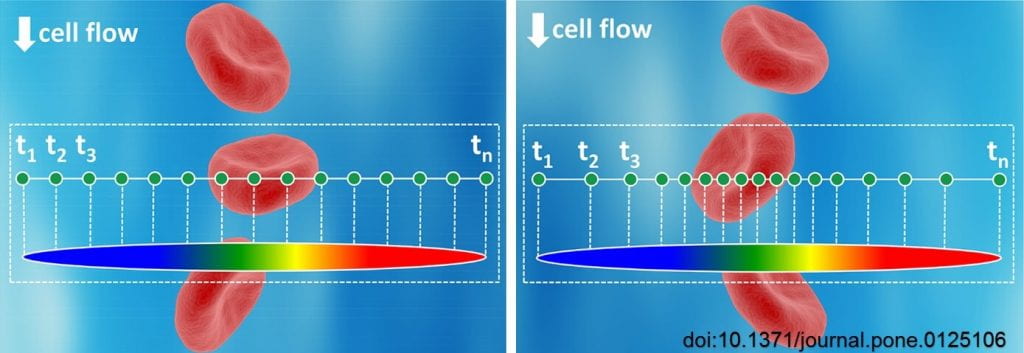
Optical Data Compression in Time Stretch Imaging
PLOS ONE | DOI:10.1371/journal.pone.0125106
Big data not only brings opportunity, but also a challenge in biomedical and scientific instruments, whose acquisition and processing units are overwhelmed by a torrent of data. The need to compress massive volumes of data in real-time has fueled interest in nonuniform stretch transformations — operations that reshape the data according to its sparsity.
In the April 23, 2015 issue of journal PLoS ONE (Volume 10, No. 4) graduate students Claire L. Chen and Ata Mohjoubfar from Jalali-Lab at UCLA demonstrate image compression performed in the optical domain and in real-time. Using nonlinear group delay dispersion and time-stretch imaging, they were able to optically warp the image such that the information-rich portions are sampled at a higher sample density than the sparse regions. This was done by restructuring the image before optical-to-electrical conversion followed by a uniform electronic sampler. Image compression was demonstrated at 36 million frames per second in real-time.
